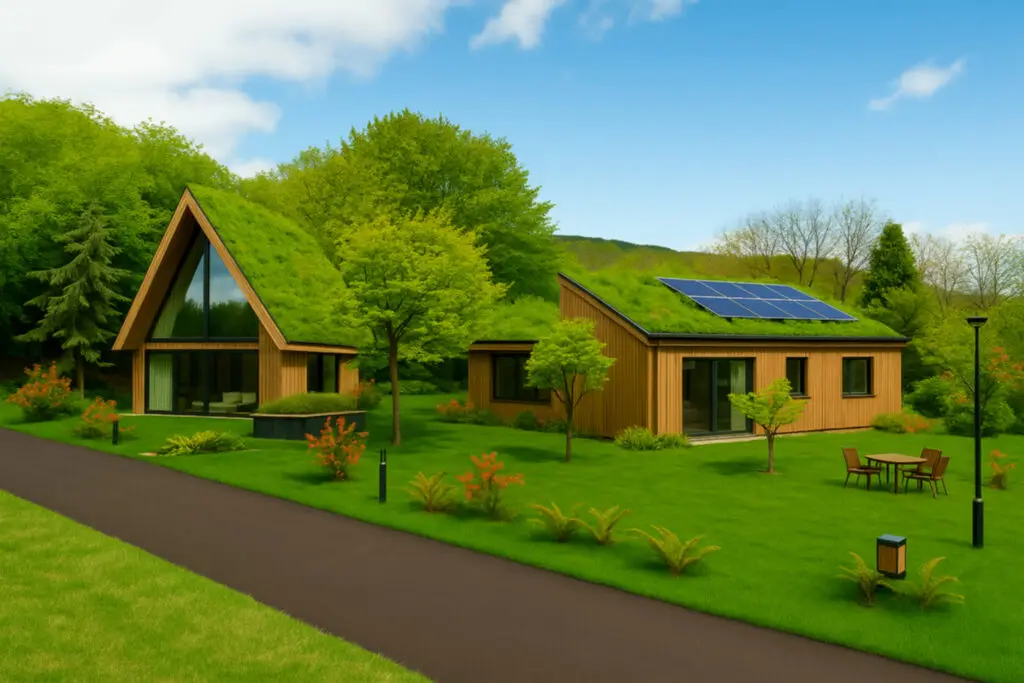Eco Infrastructure Developments QandA
Eco Infrastructure Developments QandA distills the most asked questions about green-blue infrastructure’s role in modern cities. You’ll discover how modular green buildings, flood-able parks, and biodiversity corridors work, what they cost, and which policies and finance tools accelerate adoption. Every answer references 2023–2025 evidence from Australia, New Zealand, and peer cities worldwide, ensuring accuracy and relevance. We also outline maintenance strategies, funding mechanisms such as green bonds, and digital tools that prove performance in real time. Use this guide to prepare projects and inform community discussions. Start here to gain clear, actionable insights before diving deeper into research data.

What is Eco-infrastructure and how does it differ from grey infrastructure?
Eco Infrastructure Developments QandA defines Eco-infrastructure as urban networks that use living systems—trees, wetlands, and community spaces—to deliver services once handled by concrete pipes or asphalt channels. Green elements filter air, cool streets, and create habitat. Blue elements, such as day lighted streams, slow floods and improve water quality. Social elements—parks, walkways, and libraries—strengthen community well-being. Grey infrastructure typically solves a single problem, often causing new ones downstream; a concrete channel speeds runoff yet erases habitat. Eco-infrastructure tackles several challenges at once, so one rain garden can manage storm water, polish water, host pollinators, and beautify a block. Because it works with nature, it recovers after shocks more gracefully than rigid structures. The European Environment Agency summarize these multi functional benefits in its guidance on green infrastructure planning EEA.
What 2023–2025 innovations demonstrate eco-infrastructure’s rapid progress?
Recent breakthroughs include modular green buildings, restored biodiversity corridors, storm water parks, and incentivised vertical gardens. Builders now prefabricate timber panels pre-fitted with living facades, cutting waste and allowing rapid assembly. Adelaide’s Pasadena Biodiversity Corridor diverted storm water into a revived creek, cooling and greening 300 m of suburban reserve. Auckland earmarked more than NZ $1 billion for parks designed to flood safely after its 2023 deluges. Sydney offers bonus floor area when developers install vertical greenery, sparking a skyline of living walls. Together, these examples show cities shifting from isolated pilots to systemic networks that deliver flood protection, shading, and habitat simultaneously. Water Technology details the Pasadena project’s storm-to-stream transformation Water Tech.
Which Australasian cities lead current Eco-infrastructure efforts?
Sydney, Melbourne, Auckland, and Wellington set the regional pace. Sydney’s Greening Sydney 2030 aims for 23 % canopy by 2030 and links new rail projects to green corridors. Melbourne enforces its Green Factor Tool, rewarding developments that blend trees, green roofs, and rain gardens. Auckland’s Making Space for Water program funds blue-green corridors that guide floods through parks while adding recreation space. Wellington expands Zealandia’s sanctuary influence through citywide ecological corridors that let native birds reach the coast. Each city embeds targets in planning codes and budgets, proving that Eco-infrastructure is central, not cosmetic. Auckland Council explains its blue-green strategy and investment plan OurAuckland.
How do costs and maintenance compare with grey systems, and how are projects financed?
Up-front costs for rain gardens or green roofs can exceed concrete equivalents, yet life cycle benefits usually eclipse the premium. Eco Infrastructure Developments Outlook highlights avoided flood damage, lower cooling bills, and higher property values as recurring dividends. Maintenance differs: plants need routine care, whereas pipes demand episodic repairs. Many cities now treat the first three years of maintenance as capital expense, unlocking bond financing. Green bonds and ESG-linked loans provide low-interest capital; global issuance neared US $1 trillion in 2024. Water Now Alliance recommends this financing shift and shows how Hoboken scaled green streets by embedding early maintenance in project loans WaterNow.
How does eco-infrastructure strengthen urban resilience and climate adaptation?
Eco-infrastructure manages floods, cools heat islands, cleans air, and captures carbon in one integrated system. Wetlands and bios wales absorb storm surges, exemplified by U.S. coastal wetlands that cut Hurricane Sandy damage by 16 %. Expanding tree canopy reduces peak summer temperatures and can slash air-conditioning demand nearly in half. Urban forests remove hundreds of thousands of tonnes of pollutants annually, reducing asthma and heart disease. These services protect vulnerable residents and infrastructure during heatwaves and storms. Because natural systems bend rather than break, cities recover faster when shocks occur. The White House Nature-Based Solutions Roadmap quantifies heat-reduction and flood-saving benefits White House.
Which technologies now enhance eco-infrastructure performance?
Sensor networks, advanced materials, and AI increasingly drive smarter green-blue systems. Moisture sensors tell irrigation valves when soils dry, saving water. Remote gauges in wetlands warn operators before floods peak. Permeable concrete and lightweight substrates let roads and roofs absorb rainfall without structural compromise. Digital twins model entire cities, showing planners where parks or green roofs deliver maximum cooling and drainage. Reuters reports more than 500 cities could use such twins by 2025, potentially saving billions in avoided damage. AI algorithms also guide maintenance, flagging clogged inlets or stressed plant zones for quick repair. These technologies let Eco Infrastructure Developments Outlook evolve from concept to data-driven asset management Reuters.
What policies through 2027 will accelerate Eco-infrastructure mainstreaming?
Government frameworks increasingly require nature-based solutions. Australia’s Infrastructure Plan recognizes green assets as national infrastructure, while states draft mandatory water-sensitive design codes. New Zealand’s Resource Management reforms embed blue-green design in consents and commit over NZ $1 billion to flood-ready corridors. Europe’s forthcoming Nature Restoration Law mandates net gains in urban green space, and U.S. federal grants now score higher when projects include natural flood controls. Cities also form resilience bureaus to coordinate parks, water, and transport departments, ensuring every new road or building adds ecological value. These layered policies make Eco-infrastructure the default, not the exception, for urban growth. The EU Biodiversity Strategy outlines the continent’s binding urban greening targets EU Environment.